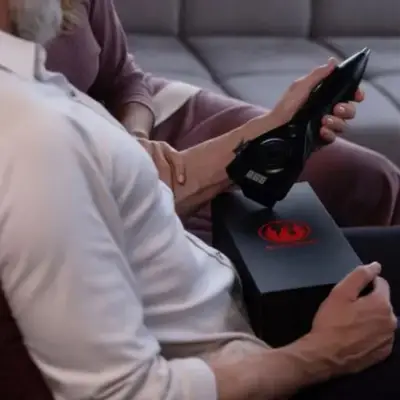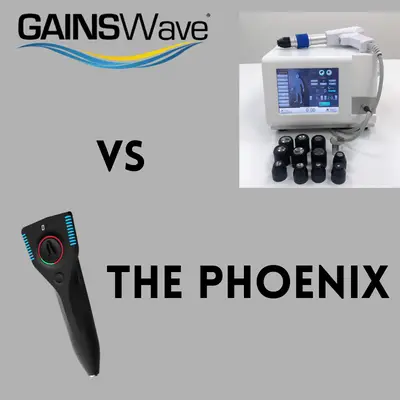If you’ve tried home ultrasound therapy in an attempt to get pain relief, but it hasn’t worked for you, what do you do with your leftover ultrasound gel? You might be thinking of using it with your TENS unit. In which case, you’ll be wondering if it’s okay to do so.
You can use ultrasound gel with a TENS unit. However, it may be less effective than gels formulated specifically for TENS electrodes because Ultrasound gel has lower electrical conductivity than gels made for use with electrodes. So, less of the TENS current can pass from the unit to your body.
If you thought all gels are equal, you’re probably surprised at this answer. So, you can read more about this issue below. You’ll also find out why you should take extra care if you do decide to use ultrasound gel with your TENS unit.
What Is a TENS Unit?
Let’s start with some basics for anyone unfamiliar with a TENS unit and what it does.
A TENS unit is a device that delivers small amounts of electrical current to the body, providing pain relief.
It’s a popular form of pain therapy because it’s easy to use and non-invasive. You can buy a TENS unit online for use at home, and there’s no need for a prescription. The therapy is also mostly side-effect free.
This TENS 7000 2nd Edition Digital TENS is an excellent example of what we’re talking about. It’s a reasonable price but comes bundled with everything you need to start using it straight away.
A TENS Unit uses electrodes that you place on your skin at or near the site of pain. They transmit the electrical impulses generated by your device to your body. These electrical currents block or inhibit pain messages traveling to your brain, providing you with pain relief.
Why Use Gel With a TENS Unit?
When you buy a TENS unit, you’ll find that you’ll also get a set of gel pads. These may be square, rectangular, or circular. These are the electrodes.
One side of the pad, the side you place against your skin, has a sticky gel coating. This gel plays two roles:
- First, it adheres the electrode to your skin, so the electrode stays in place while you’re using the TENS unit.
- Second, it efficiently and evenly conducts the electrical current from the device to your body.
The gel ensures that the electrode molds nicely to the contours of your skin. This coupling reduces any electrical resistance that might result from gaps between the electrode and your body. So, you receive maximum benefit from the electrical current transmitted by your TENS unit.
Why Do You Need a Gel?
You’ll notice that when your gel pads are new, they perform each of these functions well. They stay in place, and you can feel the electrical currents, usually as a tingling sensation, and the consequent pain relief.
However, the gel pads are reusable, and after a few uses, you may find their effectiveness in both their roles diminishes over time.
This happens because the gel loses its adhesiveness. So, it no longer provides a complete bond between the underside of the electrode and your skin. This breaks the path that the electric currents usually take to your skin through the gel.
That’s when you naturally think of replacing the gel pads. But, that can get expensive, and this is where using a gel can help because it can prolong the useful life of your gel pads.
Applying a gel to the underside of the electrode will revive its adhesive quality. In turn, you’ll also restore its effectiveness at transmitting the electrical current.
This Tensive Conductive Adhesive Gel is the type of product you might buy for use with your TENS unit electrodes. It’s an excellent way to save money by reducing the frequency you need to replace your electrodes.
What Is Ultrasound and Ultrasound Gel?
You’re probably already familiar with ultrasound as a diagnostic imaging tool. But it’s also a therapeutic tool for pain relief.
As you can likely guess, both forms of ultrasound use sound waves. These sound waves are at frequencies above 20,000 Hertz. That’s well above the frequency we humans can hear.
The difference is that for diagnostic imaging, the ultrasound machine uses the sound waves to produce images.
When used as a therapeutic tool, the sound waves vibrate the tissue, creating heat that can relieve pain.
In both cases, ultrasound gel is used as a conductive medium. It ensures that there are no air gaps between the surface of the ultrasound probe and your body. Air gaps create acoustic impedance inhibiting the movement of the soundwaves from the ultrasound probe to your body.
The ultrasound gel couples the ultrasound probe to your skin. In that way, it maximizes the amount of sound energy transferred to your body. Without it, the sound waves would reflect away from your body, so they would have no therapeutic effect.
This video provides a helpful visual explanation of what ultrasound gel does.
As you can see, ultrasound gel performs a similar role for sound waves to the gel used with a TENS unit to transfer electrical currents. It differs from TENS gel in that it’s not used as an adhesive, although it is sticky.
Will Ultrasound Gel Work With a TENS Unit?
In theory, you would think that ultrasound gel and gel for TENS units should be interchangeable. After all, they’re both sticky and conductive.
So, it should keep your TENS electrodes in place and help transmit the electrical currents to your body, right? Well, there is some evidence that suggests it’s not that simple. Granted, this study from 1984 is over thirty years old, but most of the products tested are still available today.
The study compared the electrical conductivity of several different coupling gels. Some were specifically for use with electrodes, while others were specifically sold as ultrasound gel. Two were sold at the time as being suitable for both applications.
The study found that the electrode gels had higher electrical conductivity than the ultrasound gels. It also found that the dual-purpose gels were similar to the ultrasound gels in terms of electrical conductivity.
Does That Mean You Can’t Use Ultrasound Gel With a TENS Unit?
You can still use ultrasound gel with your TENS unit, but don’t expect to get the same degree of benefit from it. That’s because of the lower conductivity of ultrasound gel. It means less of the electrical current generated by your TENS unit will get through to your skin. After all, ultrasound gel is formulated to reduce acoustic impedance, not for electrical conductivity.
You might find it tempting to turn up your TENS unit’s intensity level to compensate for the lower conductivity of the ultrasound gel. But you’ll need to be careful about doing this.
As the 1984 study above concluded, there’s a risk of causing skin irritations or burns if you use lower conductivity gels with your TENS unit. The risk arises because it’s not always possible to get an even layer of gel between the electrode and your skin.
So, where the gel layer is thicker, using a higher intensity level may not be an issue. The current getting through areas where the gel layer is thinner will be more intense and potentially damaging. Although you can use ultrasound gel with your TENS unit, it may be best not to do so.
Conclusion
You can use ultrasound gel with a TENS unit. However, you may find your TENS unit is less effective than when you use it with gels made especially for TENS electrodes. This is because of the lower electrical conductivity of ultrasound gels. It means that they transmit less of the electrical currents produced by your TENS machine.
Still, if you have some ultrasound gel lying around, you can give it a try. Different manufacturers’ gels may have different electrical conductive capacities. Take care not to try overcoming the lower conductivity by increasing your TENS device’s intensity level. Doing so carries a risk of causing skin irritation or burns.
Sources
- National Institute of Health: Ultrasound
- Premier Ultrasound Services: Ultrasound Gel
- WebMD: What is TENS
- Energy Education: Electrical Conductivity
- NHS: TENS
- Tens Pros: Electrodes Explained: How Electrodes Work
- Electrical 4 U: What is Electrical Resistance: Definition and Unit of Resistance
- NCBI: Application of Ultrasound in Medicine
- NDT: Acoustic Impedance
- ScienceDirect: Electrode Coupling Media for Transcutaneous Electrical Nerve Stimulation
- Electrotherapy: Ultrasound Gels and Coupling Agents






2 responses to “Can you use Ultrasound Gel with a TENS unit?”
[…] by a TENS unit, a small device that’s attached to gel pads that you apply to your skin. The gel pads conduct the current from the TENS unit to your skin, stimulating your sensory […]
[…] its not necessary you can use a TENS unit electrode gel and apply to the skin for a better seal. You can use TENS without the gel but if you need gel check […]